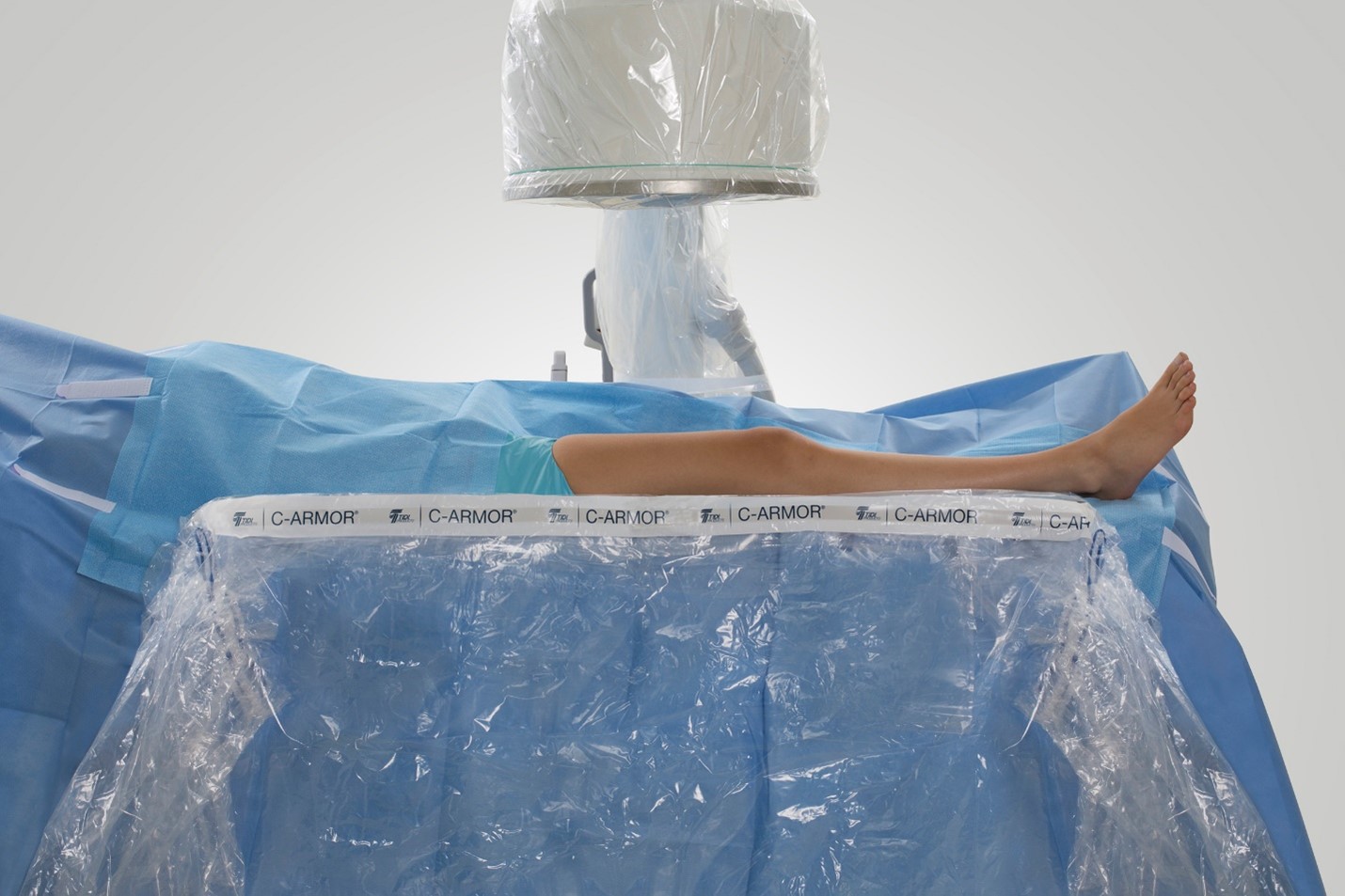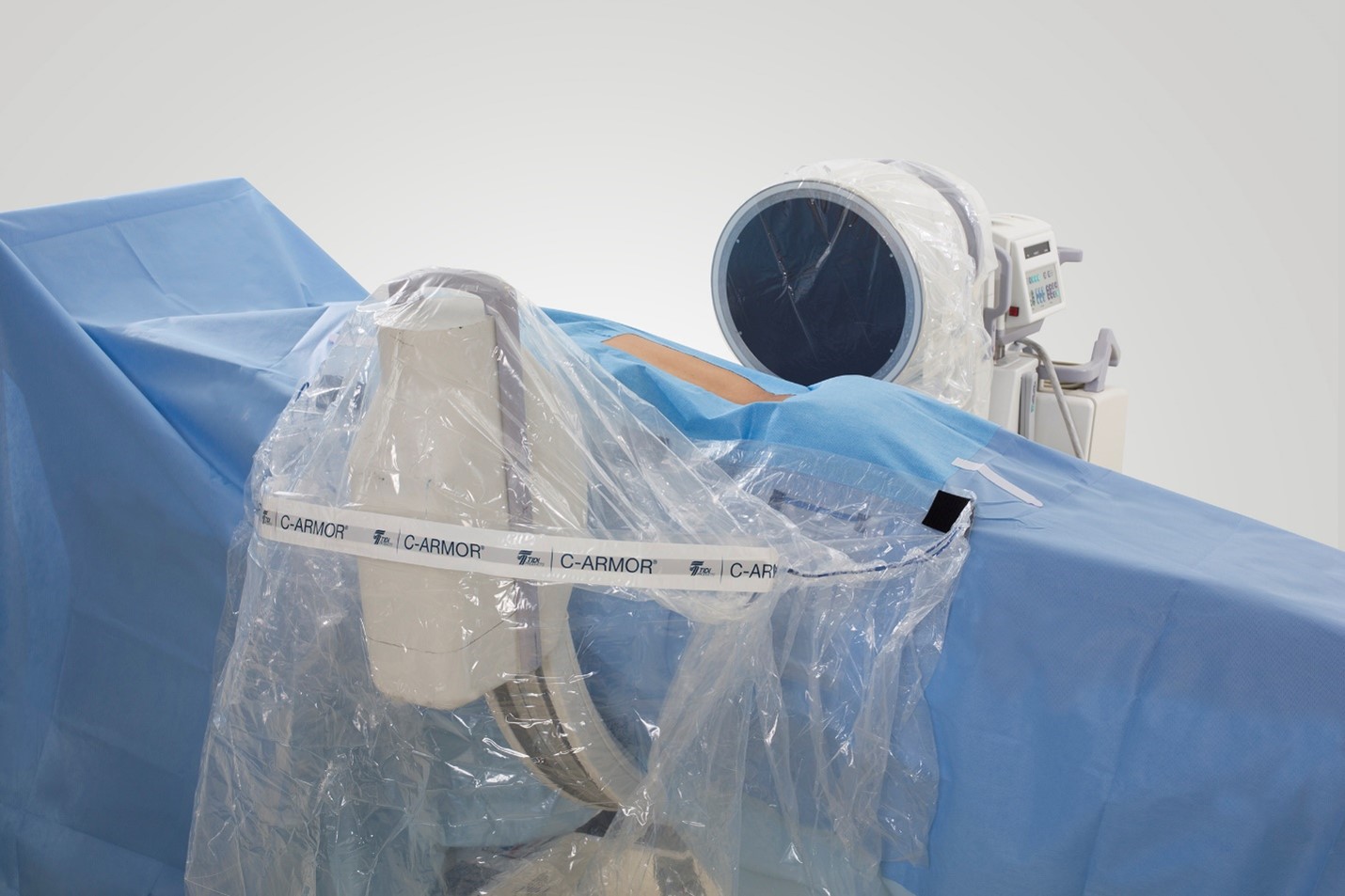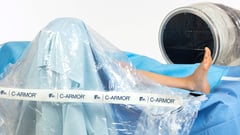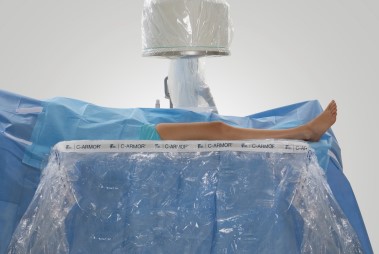
The Importance of Using an Effective C-arm Drape Technique
Despite numerous advances in infection control practices, surgical site infections remain a substantial cause of morbidity, prolonged hospitalization, and death.1 As medical technologies continue to evolve and improve, so too must the safety protocols that are associated with them.
For example, a study by Gershkovich et al. (Einstein Medical Center, Philadelphia) noted that while the use of intraoperative fluoroscopy is now routine for various surgical specialties, the machine itself may become an additional source of contamination in the operating room, particularly when the C-arm x-ray tube is maneuvered from the anterior-posterior position to the lateral position for imaging.2
Assessing C-arm Drape Techniques
Gershkovich et al. evaluated the ability of the following three drape techniques to maintain the sterility of the surgical field and surgeon when the C-arm was brought into the lateral position:2,3
1. Traditional − a three-quarter sterile sheet was attached to the side of the operative table. The free end fell towards the ground with the C-arm in the anterior-posterior position but hung freely over the C-arm when in the lateral position.
2. Modified clip drape – very similar to the traditional technique, but the sterile sheet’s free end was clipped to the side of the table when the C-arm was in the anterior-posterior position.
3. Sterile pouch – a C-Armor® Drape from TIDI Products created a sterile, five-sided pouch for the C-arm when in the lateral position (shown below). When the C-arm was in the anterior-posterior position, the pouch was secured to the table with pre-designed Velcro strips.

After maneuvering the C-arm from the anterior-posterior position to the lateral position multiple times in a simulated operating environment, the researchers’ data indicated that the sterile pouch (C-Armor) outperformed the other two techniques when it came to protecting the sterility of the C-arm drape and the surgeon’s gown and gloves.2,3
In reaffirming the significance of sterility within the operating room, the researchers wrote:
“Sterility within the operating room is of paramount importance. When sterility is broken, operating room inventory is wasted, costs are increased, and surgical times are longer. With increased operating room times, costs to the hospital are also increased, the patient is subjected to prolonged anesthesia, and there is an increased risk for continued blood loss, as well as intraoperative, and post-operative complications.”3
C-Armor During COVID-19 and Beyond
Although exacerbated by the pandemic, the struggle to sustain a sufficient healthcare workforce in the United States both predates the emergence of COVID-19 and is projected to persist well into the future.4 This trend underscores the need to adopt protocols that are not only safer but more efficient.
To this end, the easy-to-use, patented C-Armor Drape provides a standardized technique that facilitates an improved intraoperative workflow,5 particularly during surgeries that require multiple C-arm rotations into the lateral position, such as tibial/femoral nail and lumbar spine procedures.
To request a free sample of C-Armor, please click here.
SOURCES
1 Surgical Site Infection Event (SSI): Protocols, Chapter 9. National Healthcare Safety Network (NHSN), Centers for Disease Control and Prevention (CDC). Published: January 2022. Accessed: January 2022. https://www.cdc.gov/nhsn/psc/ssi/index.html
2 Gershkovich GE, Tiedeken NC, Hampton D, Budacki R, Samuel SP, Saing M. A Comparison of Three C-Arm Draping Techniques To Minimize Contamination of the Surgical Field. J Orthop Trauma. 2016 Oct;30(10): e351-6. doi: 10.1097/BOT.0000000000000619. PMID: 27124823.
3 Gershkovich GE, Hampton D, Tiedeken NC, Budacki R, Saing M, Samuel SP. C-Arm Fluoroscopy Draping: A Comparison of Three Techniques. Department of Orthopedic Surgery, Einstein Medical Center, Philadelphia, PA. Presented as a poster at the Annual Philadelphia Orthopedic Trauma Symposium, June 12, 2015, Philadelphia, PA.
4 Fact Sheet: Strengthening the Health Care Workforce. American Hospital Association (AHA). Published: November 2021. Accessed online: January 2022. https://www.aha.org/fact-sheets/2021-05-26-fact-sheet-strengthening-health-care-workforce
5 Kaska, SC. A Standardized and Safe Method of Sterile Field Maintenance during Intra-Operative Horizontal Plane Fluoroscopy. Patient Safety in Surgery 2010 4:20.








